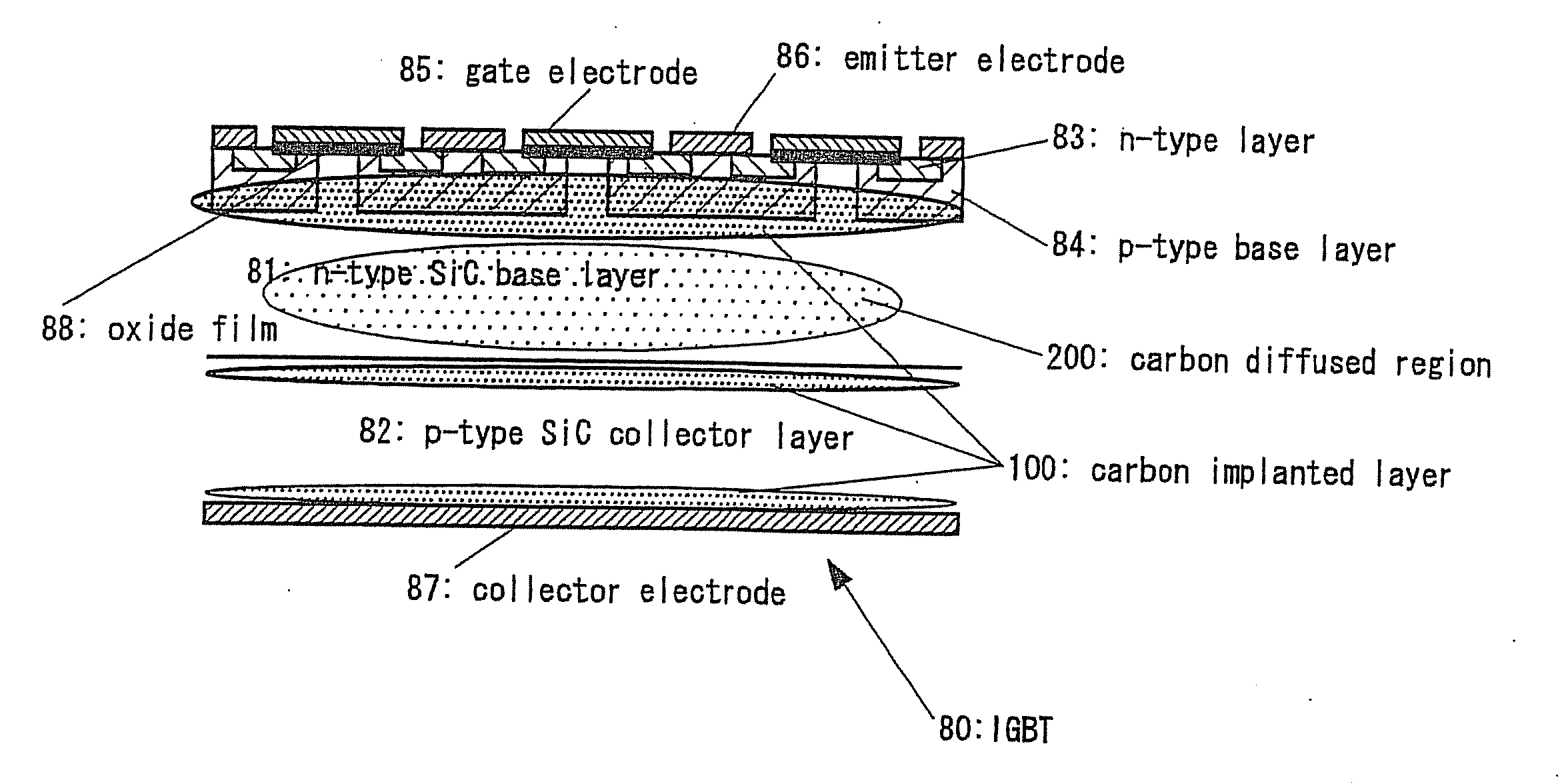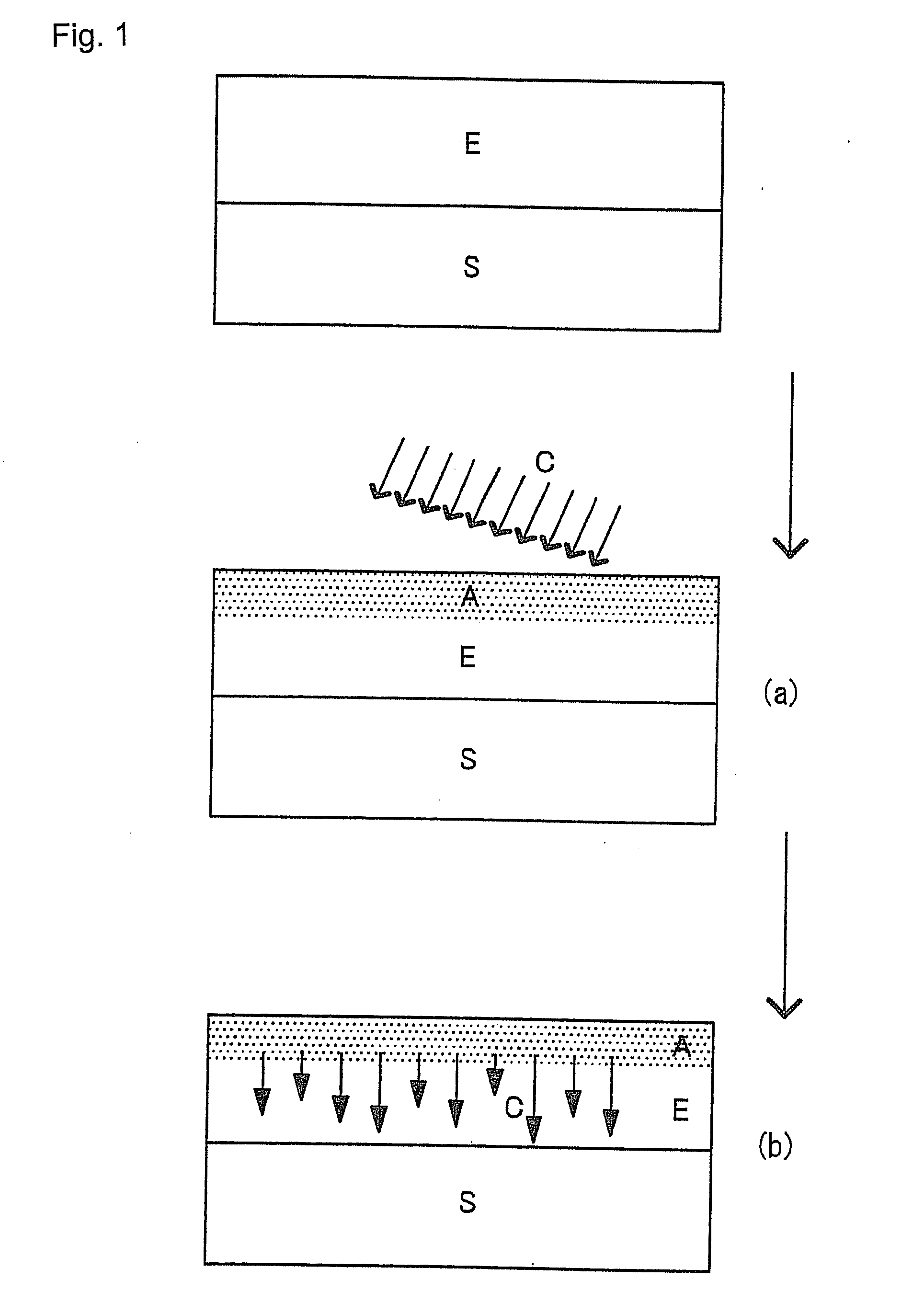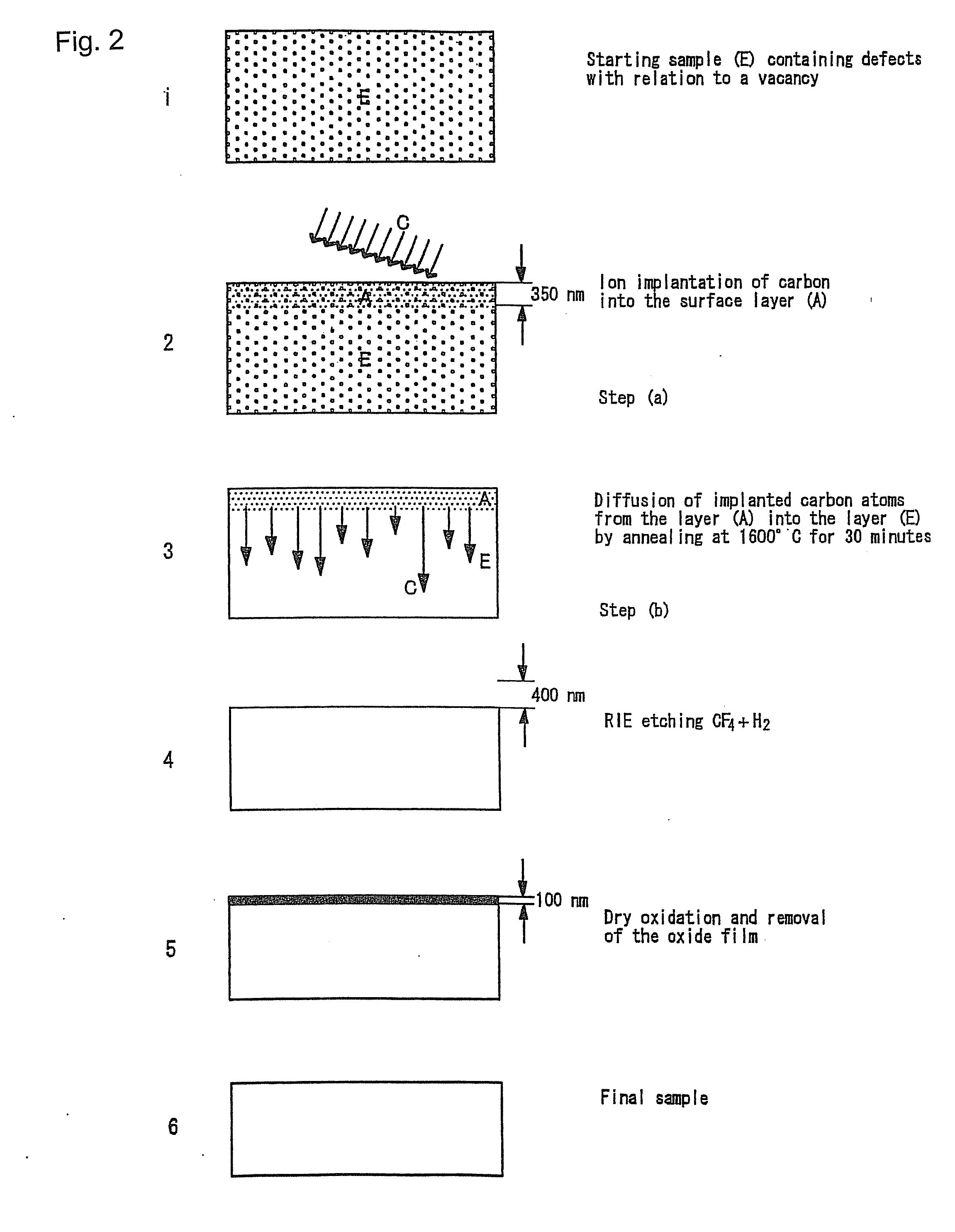SiC Crystal Semiconductor Device
a semiconductor device and crystal technology, applied in the direction of crystal growth process, polycrystalline material growth, chemistry apparatus and processes, etc., can solve the problems of insufficient improvement, difficult or impossible to remove native intrinsic defects, and still contain native intrinsic defects, etc., to achieve effective reduction or elimination of carrier trapping centers, excellent device characteristics
- Summary
- Abstract
- Description
- Claims
- Application Information
AI Technical Summary
Benefits of technology
Problems solved by technology
Method used
Image
Examples
Embodiment Construction
[0233]A preferred embodiment of the present invention will be described below in detail with reference to the accompanying drawings. FIG. 1 is a schematic view showing the process of fabricating an SiC layer in which recombination centers are reduced while utilizing the method according to a preferred embodiment of the present invention.
[0234]In the SiC crystal layer according to the present embodiment, an epitaxial layer (E) is grown from the surface of an SiC substrate (S). A known method, preferably chemical vapor deposition (CVD), is applied to the growth of the epitaxial layer (E).
[0235]As the step (a), carbon atoms (C) are ion-implanted into a shallow surface layer (A) of the epitaxial layer (E). By the above step, excess carbon interstitials are introduced into the surface layer (A).
[0236]Next, as the step (b), by heating the SiC crystal layer, carbon interstitials introduced into the surface layer (A) are diffused out from the surface layer (A) to the epitaxial layer (E) tha...
PUM
 Login to View More
Login to View More Abstract
Description
Claims
Application Information
 Login to View More
Login to View More - R&D
- Intellectual Property
- Life Sciences
- Materials
- Tech Scout
- Unparalleled Data Quality
- Higher Quality Content
- 60% Fewer Hallucinations
Browse by: Latest US Patents, China's latest patents, Technical Efficacy Thesaurus, Application Domain, Technology Topic, Popular Technical Reports.
© 2025 PatSnap. All rights reserved.Legal|Privacy policy|Modern Slavery Act Transparency Statement|Sitemap|About US| Contact US: help@patsnap.com



